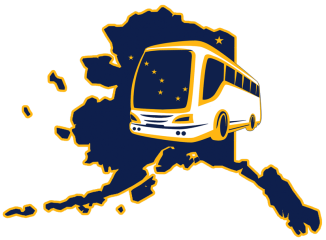What sound does the aurora make

Northern lights are known as one of the world’s most unique natural wonders. Every year, tourists flock to the Arctic Circle for the chance to see the night sky bathed in a variety of brightly colored lights. Humans have observed the Northern Lights for thousands of years. Many myths and legends have resulted, but there is one question that these speculations rarely answer. So, do auroras make sounds?
The answer is “I will put it out”. Some past observers have reported strange sounds coming from the auroras, but only recently have scientists determined the mechanism behind them. Read on to learn why the Northern Lights make noise and what they sound like.
what sound does the aurora make

Although the visual beauty of the Aurora Borealis has been recognized by generations of observers, it has been relatively recently that the unique noises that accompany them have been reported. Auroral sounds have been described as “eerie” sounds similar to white noise on radio and television, but have long been dismissed as being caused by meteorological phenomena or other unrelated events. . However, recent scientific research confirms that the Northern Lights do indeed make sounds. However, in many cases, the sounds are inaudible to humans.
To understand why the aurora makes sounds, it is important to first understand how they work. Auroras are caused by the solar wind, which refers to the charged particles that the sun periodically emits. The solar wind collides with the Earth’s magnetosphere, a protective barrier formed by the Earth’s magnetic field. The magnetosphere serves to deflect harmful radiation from the sun and is one of the reasons why the Earth can support life.
When the solar wind hits the Earth at the points where the magnetosphere meets the atmosphere (at the North and South Poles), charged particles in the solar wind excite atoms in the atmosphere. Atoms are made up of three types of particles: positively charged protons, uncharged neutrons, and negatively charged electrons. Protons and neutrons are in the nucleus, the central part of the atom, and electrons orbit the nucleus in the same way that the moon orbits the earth and the earth orbits the sun.
When an atom is excited, electrons move from existing orbitals to higher energy orbitals further away from the nucleus. When these electrons return to their original trajectories, they emit photons, which are particles of light. When millions of atoms are excited, a large amount of light is generated, creating an aurora. The effect is similar to neon signs, which use electricity to excite the atoms of neon gas, causing them to emit light.
Scientists originally thought that the aurora bore no sound. One leading theory suggested that the sounds people heard while viewing the Northern Lights were coming from the trees. During an auroral event, the surrounding atmosphere can carry an unusually high level of electricity, creating a charge differential between ground objects and the surrounding air.
Just as your hand can discharge static electricity when you touch a metal doorknob, so can sharp objects such as pine cones and leaves. Therefore, it was thought that the aurora would discharge large amounts of electricity into the air from the leaves and pine cones, creating the crackling sound that viewers sometimes hear.
However, in 2012, a Finnish scientific study confirmed that the sounds of the northern lights originate from 70 meters above the ground, much higher than the treetops of the Arctic Circle. The study determined that aurora sounds are caused by inversion layers, which refer to parts of the atmosphere where temperature rises with increasing altitude, rather than the usual cooling. Inversion layers often occur after a mild sunny day, and form after sunset when the surface cools and warm air rises after sunset, and mild weather conditions prevent the warm air from mixing with cooler air above. .
According to this study, the inversion layer acts as a kind of lid for electricity, shielding the negative charges in the air below from the positive charges in the air above. Normally this would not produce any audible effect, but during an auroral event, charged particles from the sun disrupt the inversion layer, mixing positive and negative charges and creating static electricity. It produces the crackling that aurora viewers sometimes hear.
The report states that inversion layers typically form in the atmosphere 70 meters above the ground, which, as the report points out, is also where the aurora sounds originate. This confirms the claim that inversion layers are responsible for the auroral sound.
In general, inversion layers do not form unless very specific conditions are met, so aurora sounds are difficult to hear. Also, unless the size and length of the aurora are specific, the inversion layer that causes the sound will not break. Aurora sounds are most common during the peak of the 11-year cycle, when the solar wind is more frequent and intense. Therefore, even if you go out to see the Northern Lights, there is no guarantee that you will be able to hear the sounds of the Northern Lights.
summary

Despite long being dismissed as an observer’s delusion, modern science has proven that the sounds of the aurora are real. Aurora borealis are unlikely to be heard, subject to a combination of very calm weather and particularly strong solar storms. But if you go to the Arctic to see the northern lights, chances are good that you’ll hear as well as see them. If you’re curious about the Northern Lights, why not book an Northern Lights viewing trip and see for yourself?
